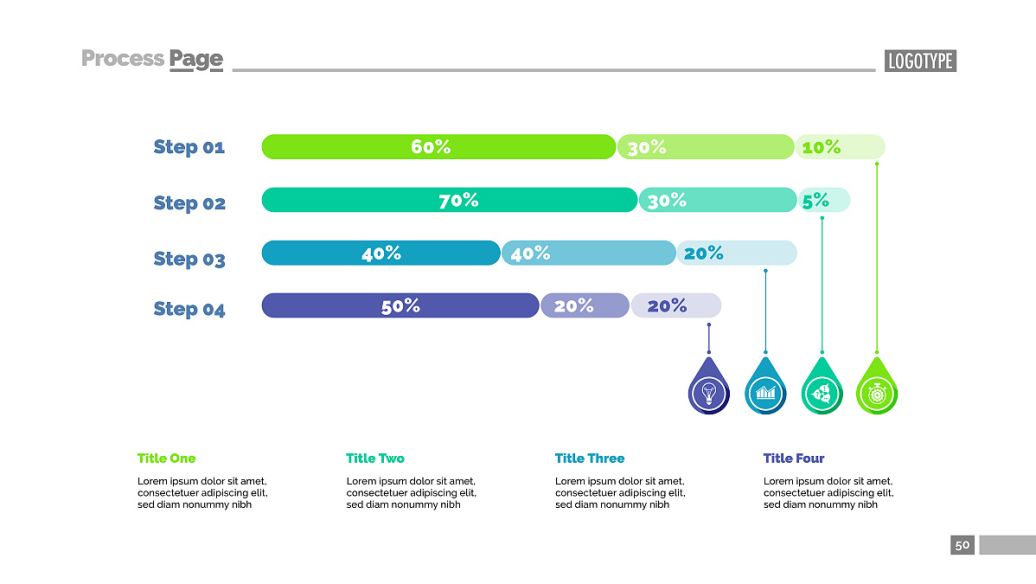行为分析吧 关注:56,710贴子:161,190
Introduction
Violent crime is of increasing concern in our society.暴力犯罪是在我们的社会越来越多的关注。
Murder, arson, and sexual assault represent serious interpersonal violent behaviors,杀人,放火,性侵犯代表严重的人际之间的严重暴力行为
and law enforcement officials feel public pressure to apprehend the perpetrators as quickly as possible. 执法人员感受到了希望尽快逮捕犯罪分子的公众压力。
Violent crime is of increasing concern in our society.暴力犯罪是在我们的社会越来越多的关注。
Murder, arson, and sexual assault represent serious interpersonal violent behaviors,杀人,放火,性侵犯代表严重的人际之间的严重暴力行为
and law enforcement officials feel public pressure to apprehend the perpetrators as quickly as possible. 执法人员感受到了希望尽快逮捕犯罪分子的公众压力。
Categorizing these individuals began to change in 1838 when the winning entry at the French Académie des Sciences Morales et Politiques, the highly competitive academic society, was titled, “The Dangerous Classes of the Population in the Great Cities, and the Means of Making Them Better” (Rennie, 1977). 对这些个体进行的分类从1838年开始改变,当题目是“大城市人口中的危险阶级,让他们更好的措施”获奖作品进入法国科学学院Morales et Politiques那个竞争激烈的学术团体
The term dangerous class was then used to describe individuals who were criminals or had such potential.术语“危险阶级”,通常用来形容谁是罪犯或有这样的潜力的人。
Initially these were the poor, homeless, and unemployed in the large cities.最初,这些都是穷人,无家可归者和失业者在大城市。
The term dangerous class was then used to describe individuals who were criminals or had such potential.术语“危险阶级”,通常用来形容谁是罪犯或有这样的潜力的人。
Initially these were the poor, homeless, and unemployed in the large cities.最初,这些都是穷人,无家可归者和失业者在大城市。
Classification of offenders began with the work of statistics.罪犯分类始于统计工作。
This early work permitted a comparison of the incidence of crime with factors, such as race, age, sex, education, and geography (Rennie, 1977).这种早期的工作比较犯罪的发生率通过以下因素,如种族,年龄,性别,教育和地域
Cesare Lombrosos, the famed Italian physician, is generally credited with launching the scientific era in criminology.Cesare Lombrosos,著名的意大利医生,因发展了科学时代的犯罪模式而成为权威
In 1872 he differentiated five types of criminals— the born criminal, the insane criminal, the criminal by passion, the habitual criminal, and the occasional criminal (Lindesmith & Dunham 1941)— based on Darwin’s theory of evolution.1872年,他区分五种类型的罪犯,天生罪犯,癫狂罪犯,激情罪犯,惯犯,偶犯(Lindesmith与Dunham 1941年) - 根据达尔文的进化理论。
The operational definitions for the five groups that were developed allowed subsequent investigators to test Lombrosos’s formulations empirically.这发展出来的五种分类的定义允许后续的研究者实证分析Lombrosos的理论。
A majority of his hypotheses and theories proved to be invalid, but the fact that they were testable was an advancement for the science (Megargee & Bohn, 1979).他大部分的假设和理论被证明是无效的,但他们是可测试的这个事实是科学的进步(梅加吉&博恩,1979)。
This early work permitted a comparison of the incidence of crime with factors, such as race, age, sex, education, and geography (Rennie, 1977).这种早期的工作比较犯罪的发生率通过以下因素,如种族,年龄,性别,教育和地域
Cesare Lombrosos, the famed Italian physician, is generally credited with launching the scientific era in criminology.Cesare Lombrosos,著名的意大利医生,因发展了科学时代的犯罪模式而成为权威
In 1872 he differentiated five types of criminals— the born criminal, the insane criminal, the criminal by passion, the habitual criminal, and the occasional criminal (Lindesmith & Dunham 1941)— based on Darwin’s theory of evolution.1872年,他区分五种类型的罪犯,天生罪犯,癫狂罪犯,激情罪犯,惯犯,偶犯(Lindesmith与Dunham 1941年) - 根据达尔文的进化理论。
The operational definitions for the five groups that were developed allowed subsequent investigators to test Lombrosos’s formulations empirically.这发展出来的五种分类的定义允许后续的研究者实证分析Lombrosos的理论。
A majority of his hypotheses and theories proved to be invalid, but the fact that they were testable was an advancement for the science (Megargee & Bohn, 1979).他大部分的假设和理论被证明是无效的,但他们是可测试的这个事实是科学的进步(梅加吉&博恩,1979)。
Englishman Charles Goring refuted the Lombrosian theory of the degenerate “criminal man” in 1913, concluding, “The one vital mental constitutional factor in the etiology of crime is defective intelligence” (p. 369).英国人Charles Goring 反驳Lombrosian在1913年提出的“犯罪人蜕化”理论,声称:在犯罪在病理上的至关重要的精神因素是智力有缺陷
This concept persisted for several decades.这个概念持续了几十年。
Henry Goodard, who did his early work on feeblemindness in 1914, reported that 50 percent of all offenders were defective (Goddard, 1914).亨利Goodard,在1914年完成了他早期的成果关于智力缺陷,报告说,50%的罪犯是有缺陷的(戈达德,1914)
V. V. Anderson reported 28 to 50 percent defective in 1919. 1919年,维维·安德森则提出报告称28%~50%有缺陷的
This concept persisted for several decades.这个概念持续了几十年。
Henry Goodard, who did his early work on feeblemindness in 1914, reported that 50 percent of all offenders were defective (Goddard, 1914).亨利Goodard,在1914年完成了他早期的成果关于智力缺陷,报告说,50%的罪犯是有缺陷的(戈达德,1914)
V. V. Anderson reported 28 to 50 percent defective in 1919. 1919年,维维·安德森则提出报告称28%~50%有缺陷的
As psychometric techniques improved, the finding of mental deficiency changed. 随着心理测量方法改善,智力缺陷的诊断发现也随之改变
Murchison in 1928 concluded that those in “the criminal group are superior in intelligence to the white draft group of WWI” (Bromberg, 1965).默奇森在1928年得出结论,那些在“罪犯群体的智商都高于第一次世界大战时候的平民”(布隆伯格,1965)
As studies progressed, it became obvious that a disordered personality organization (including psychoses, neuroses, and personality problems) was a more significant factor in crime than feeblemindedness.研究发现,显然,混乱的人格系统(包括精神病,神经症,人格问题)是犯罪的一个更重要的因素相比智力缺陷而言。
Murchison in 1928 concluded that those in “the criminal group are superior in intelligence to the white draft group of WWI” (Bromberg, 1965).默奇森在1928年得出结论,那些在“罪犯群体的智商都高于第一次世界大战时候的平民”(布隆伯格,1965)
As studies progressed, it became obvious that a disordered personality organization (including psychoses, neuroses, and personality problems) was a more significant factor in crime than feeblemindedness.研究发现,显然,混乱的人格系统(包括精神病,神经症,人格问题)是犯罪的一个更重要的因素相比智力缺陷而言。
With increasing rapidity, from the late 1930s to the World War II years to the present, interest has shifted away from insanity and mental defectiveness to personality disturbances in analyzing the genesis of crime. 从20世纪30年代末到二战再到现在,分析犯罪成因的兴趣以越来越快的速度由精神错乱和精神缺陷方面向人格障碍转移
In the decades before the report of Bernard Glueck from Sing Sing Prison in New York State (1918), the focus in crime study was on subnormal mentality.在几十年前伯纳德Glueck作出的来自某监狱的报告(1918),在犯罪的研究重点是不正常的精神状态
In the decades before the report of Bernard Glueck from Sing Sing Prison in New York State (1918), the focus in crime study was on subnormal mentality.在几十年前伯纳德Glueck作出的来自某监狱的报告(1918),在犯罪的研究重点是不正常的精神状态
Typologies of crime traditionally have been developed addressing the criminal offense.传统的犯罪类型学已经发展出来解决刑事罪行。
The psychiatric perspective to understanding crime has used two approaches: scrutiny of the inner (mental and moral) world of the criminal offender and examination of the external (social) world in which he lives (Bromberg, 1965). 用来理解犯罪的精神病学采用了两种途径:对犯罪分子的内心世界(精神和道德)的审视,审查其所生活的外部(社会)的世界。
The psychiatric perspective to understanding crime has used two approaches: scrutiny of the inner (mental and moral) world of the criminal offender and examination of the external (social) world in which he lives (Bromberg, 1965). 用来理解犯罪的精神病学采用了两种途径:对犯罪分子的内心世界(精神和道德)的审视,审查其所生活的外部(社会)的世界。
A project at the Bellevue Psychiatric Hospital in New York City, spanning 1932 to 1965 (Bromberg, 1965), found that the personality patterns of criminals far outshadowed the significance of psychotic or defective diagnoses in terms of analyzing criminal behavior and in assisting the court and probation department in estimating the potential or deficits of the individual offender. 在纽约市贝尔维尤精神病医院的一个跨越1932年至1965年(布朗伯格,1965)的项目发现,罪犯的人格特征在分析犯罪行为,协助审判,判断个别罪犯适用所潜在的危险等方面的意义,远远超出了诊断其精神病或者缺陷。
Fifteen personality diagnoses were established by this project.这个项目进行了十五例的人格诊断。
Fifteen personality diagnoses were established by this project.这个项目进行了十五例的人格诊断。
The investigation of the psychological motivations and social stresses that underlie crime has proved that the behavior patterns involved in criminal acts are not far removed from those of normal behavior.犯罪的心理动机和社会压力的调查已经证明犯罪过程中行为模式是源自的罪犯的日常行为。
Studies indicate that criminal behavior, as is true of all other behavior, is responsive to inner and outer stresses.研究表明,犯罪行为,正如所有行为一样,受到内部和外部压力的影响。
The external realities of mental life—social pressures, cultural emphases, physical needs, subcultural patterns of life—precipitate criminal action. 精神的外在表现,如社会压力,文化差异,生理需要,亚文化模式,促成犯罪行为
The inner realities of behavior—neurotic reactions, impulses, unconscious motivations, preconscious striving, eruption of infantile aggressions—represent a precondition to criminal acts.行为的内在表现,如神经质的反应,冲动,潜意识动机,前意识挣扎,原始侵略本能的爆发,是犯罪行为的前提。
Criminal behavior is suggested to derive from three behavioral areas: (1) the aggressive tendency, both destructive and acquisitive; (2) passive, or subverted, aggression; and (3) psychological needs (Bromberg, 1965).犯罪行为被建议从三个方面的行为推导:1侵略性的倾向,破坏性和贪婪,2消极,或颠覆,侵犯,3心理需求。
Studies indicate that criminal behavior, as is true of all other behavior, is responsive to inner and outer stresses.研究表明,犯罪行为,正如所有行为一样,受到内部和外部压力的影响。
The external realities of mental life—social pressures, cultural emphases, physical needs, subcultural patterns of life—precipitate criminal action. 精神的外在表现,如社会压力,文化差异,生理需要,亚文化模式,促成犯罪行为
The inner realities of behavior—neurotic reactions, impulses, unconscious motivations, preconscious striving, eruption of infantile aggressions—represent a precondition to criminal acts.行为的内在表现,如神经质的反应,冲动,潜意识动机,前意识挣扎,原始侵略本能的爆发,是犯罪行为的前提。
Criminal behavior is suggested to derive from three behavioral areas: (1) the aggressive tendency, both destructive and acquisitive; (2) passive, or subverted, aggression; and (3) psychological needs (Bromberg, 1965).犯罪行为被建议从三个方面的行为推导:1侵略性的倾向,破坏性和贪婪,2消极,或颠覆,侵犯,3心理需求。
Classification of criminal offenders has been and is an important component in correctional facilities throughout the United States.犯罪分类学已经是或者一直都是全美惩教系统的重要组成部分
In 1973 the National Advisory Commission called for criminal classification programs to be initiated throughout the criminal justice system (Megargee & Bohn, 1979).在1973年,美国咨询机构号召在刑事审判系统中启动犯罪分类程序
This has not been an easy task.这不是一项容易的任务
The correctional system is a complex, expanding, expensive operation that has accountability to society, individual communities, correctional staff, and the inmates themselves.惩教系统是一个复杂的,扩展的,昂贵的系统有对社会,社区,惩教人员和囚犯自己的责任。 The current trend within the correctional system has been growth of the inmate population with a modest growth in facilities.囚犯人口的增长与设施缓慢增长是现在惩教系统内一个趋势。
As the population within the system is faced with economic and now medical issues (such as AIDS), classification is a cost-effective and efficient management and treatment tool.由于系统内的人面临着经济和现在的医疗问题,分类是一个具有成本效益和高效率的管理工具 It provides common language for the various professional groups to communicate among themselves.于各种群体分类能够提供了共同语言对进行相互交流
In 1973 the National Advisory Commission called for criminal classification programs to be initiated throughout the criminal justice system (Megargee & Bohn, 1979).在1973年,美国咨询机构号召在刑事审判系统中启动犯罪分类程序
This has not been an easy task.这不是一项容易的任务
The correctional system is a complex, expanding, expensive operation that has accountability to society, individual communities, correctional staff, and the inmates themselves.惩教系统是一个复杂的,扩展的,昂贵的系统有对社会,社区,惩教人员和囚犯自己的责任。 The current trend within the correctional system has been growth of the inmate population with a modest growth in facilities.囚犯人口的增长与设施缓慢增长是现在惩教系统内一个趋势。
As the population within the system is faced with economic and now medical issues (such as AIDS), classification is a cost-effective and efficient management and treatment tool.由于系统内的人面临着经济和现在的医疗问题,分类是一个具有成本效益和高效率的管理工具 It provides common language for the various professional groups to communicate among themselves.于各种群体分类能够提供了共同语言对进行相互交流
Megargee and Bohn (1979) found during their research project that a comprehensive classification system must take into account many different components of the criminal population. 在研究项目的过程中Megargee and Bohn (1979)发现全面的分类系统,必须考虑到罪犯群体中的不同构成
They stressed that an important element in any such system is the personality and behavioral pattern of the individual offender. 他们强调,在任何这样系统的一个重要因素罪犯个体之间的个性和行为模式
They stressed that an important element in any such system is the personality and behavioral pattern of the individual offender. 他们强调,在任何这样系统的一个重要因素罪犯个体之间的个性和行为模式
In the 1980s, a research team at the Massachusetts Treatment Center in Bridgewater, Massachusetts, began a research program to classify sexual offenders (Knight, Rosenberg, & Schneider, 1985). 在20世纪80年代,布里奇沃特州马萨诸塞治疗中心,开始了一项研究以性犯罪者进行分类的计划。
Their application of a programmatic approach to typology construction and validation has produced taxonomic systems for both child molesters and rapists. 一种针对类型学的解释和验证的方案办法的应用已经为儿童性骚扰和强奸犯的犯罪产生分类系统
The classification for child molesters has demonstrated reasonable reliability and consistent ties to distinctive developmental antecedents.儿童性侵的分类已经证明与发育阶段具有可靠性和稳定的合理关联
In addition, preliminary results of a twenty-five-year recidivism study of child molesters indicate that aspects of the model have important prognostic implications (Knight & Prentky, 1990).此外,一项经过对儿童性侵累犯的25年的研究的初步结果表明这个模型各方面具有重要的预判的意义(Knight & Prentky, 1990)
Their application of a programmatic approach to typology construction and validation has produced taxonomic systems for both child molesters and rapists. 一种针对类型学的解释和验证的方案办法的应用已经为儿童性骚扰和强奸犯的犯罪产生分类系统
The classification for child molesters has demonstrated reasonable reliability and consistent ties to distinctive developmental antecedents.儿童性侵的分类已经证明与发育阶段具有可靠性和稳定的合理关联
In addition, preliminary results of a twenty-five-year recidivism study of child molesters indicate that aspects of the model have important prognostic implications (Knight & Prentky, 1990).此外,一项经过对儿童性侵累犯的25年的研究的初步结果表明这个模型各方面具有重要的预判的意义(Knight & Prentky, 1990)
扫二维码下载贴吧客户端
下载贴吧APP
看高清直播、视频!
看高清直播、视频!
贴吧热议榜
- 1新版射雕票房扑街谁背锅2103150
- 2美国对华加征关税影响几何?1867368
- 3哪吒2预测总票房超67.4亿1707664
- 4DeepSeek吃了多少贴吧老哥1588329
- 5龙胖梦无缘2025国际乒联世界杯1142232
- 6马布里大瓜真的假的967725
- 7蛟龙制片人说打一星的都是黑子885144
- 8OpenAI创始人承认路走错了630637
- 9美国人是怎么看罗斯福的448580
- 10G2不敌VP什么水平428631













